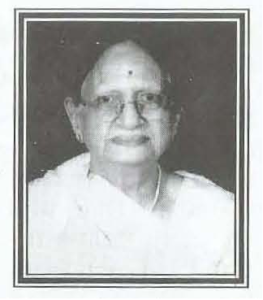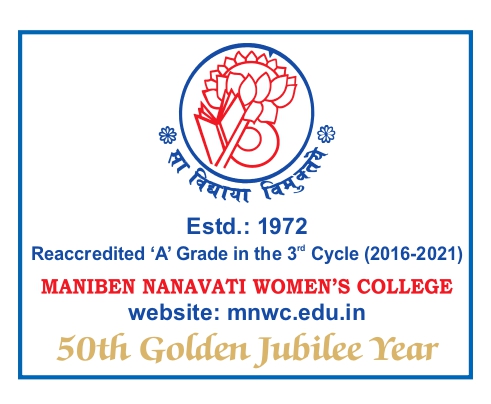HISTORY OF COLLEGE
Maniben Nanavati Women’s College is the dream child of two dynamic and farsighted women – late Smt. Kantaben Shah (1916-1981) and late Smt. Sunitaben Sheth (1924-2012), the erstwhile Chairperson of the Managing Committee. Both of them hailed from aristocratic Guajarati business families fully devoted to the cause of welfare and upliftment of the community in their immediate surroundings. As active members of the Bhagini Seva Mandir Kumarika Stree Mandal (BSMKSM), Vile Parle –West, Mumbai, both of them kept up to the main mission of the Mandal- the welfare and empowerment of women. The foundation stone of the BSMKSM was laid by Mahatma Gandhi, the beloved Bapu. Following the footsteps of Gandhiji’s efforts in educating and empowering women, they started the Nootan Mahila College in 1972 under the aegis of BSMKSM with a small number of 110 students. In 1978, Shree Chandulal Nanavati Women’s Institute and Girls’ High School, an educational trust took over the administration of the College and rechristened it with the present name.
With the introduction of the 10-2-3 system of education, a junior college was started in June 1976. It was named Tapiben Chhaganlal Lalji Valia Junior College in June 1979. The same year, the College received permanent affiliation from the SNDT Women’s University, Mumbai. The college remain affiliated to same University till date.
Our Visionaries
Smt. Kantaben Shah (1916 – 1981)
The first Founder President of the Managing Committee of the College, she continued her assignment as the President till her death in 1981. A very dynamic, resourceful, farsighted and disciplined woman, she used her good offices as Corporator and Member of the Legislative Assembly to raise funds and establish contacts that helped the College to flourish and grow well. Her leadership helped to establish strong foundations for the college.


Smt. Sunitaben Sheth (1924-2012)
A religious minded person, she was an educationist who firmly believed in creating opportunities for women to grow. Her passion for establishing an institution for educating women and her collaborative efforts with Kantaben and Mandakiniben led to the formation of Maniben Nanavati Women’s College. She nurtured teaching and non teaching staff alike and students were always her priority. She was always fond of reading and therefore took keen interest in setting up the college library. Her vision was not to build an institute of just academic excellence, but to provide education, knowledge and value system to women so that they become better homemakers, mothers, professionals and confident individuals. Sunitaben Sheth firmly believed that no education ever goes to waste and you will apply it at some point or the other knowingly or unknowingly.
Shri. Jagdish Nanavati (1928-2011)
Born to the philanthropic Nanavati Family, Jagdish, the eldest son of Chandulal Balabhai Nanavati was a unique personality. Influenced by his mother Maniben Nanavati and Swami Anand, he had two major passions in life: philanthropy and nature. While meeting with the challenges of his first passion he rose to be the level of being the trustee of the family run charitable organization at a very young age of 25. From member of the Trustee Board, he became the President of Dr. Balabhai Nanavati Hospital, Hon . Secretary of Chandulal Nanavati Women’s Institute and Girl’s High School and President of Khadi Village Industries Association. He was the President of Mumbai Upnagar Seva Mandai, a public charitable trust where Gandhian activities are being conducted for more than seven decades.


Mrs. Mandakini J, Nanavati (1926-2015)
Mandakiniben, was an ardent follower of Gandhian principles. She was a social activist, academician and a tree lover who was actively involved with a number of social organizations
that worked for the betterment of society. A graduate from the famous Elphistone College in Mumbai, she, along with Ba, played an active role in the freedom movement and continued to be a strong advocate of swadeshi and gramodyog goods all along her life. Khadi was like her second skin and she remained actively involved with the Gramodyog Centres such as Kora Kendra, Khadi Bhavan and Mumbai Upnagar Seva Mandai. She was an environmentalist a self taught investor and a visionary.
Copyright © 2020. All Rights Reserved to Maniben Nanatvati Women’s College | Powered by WhiteCode



